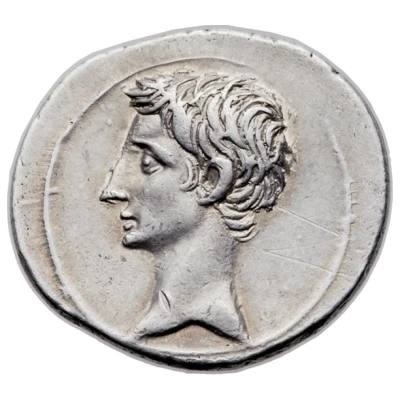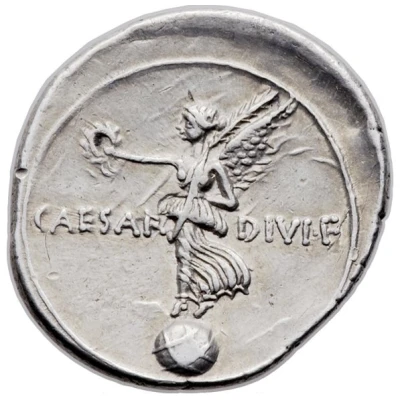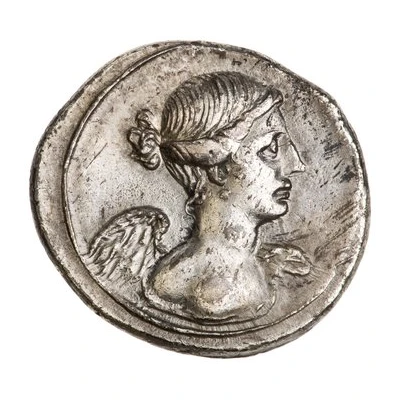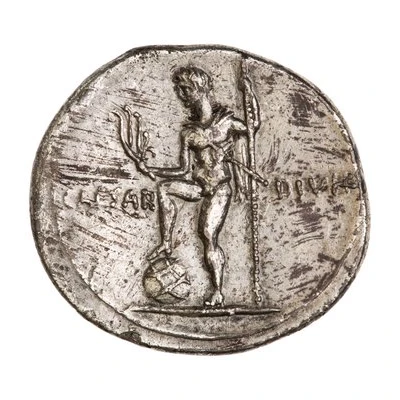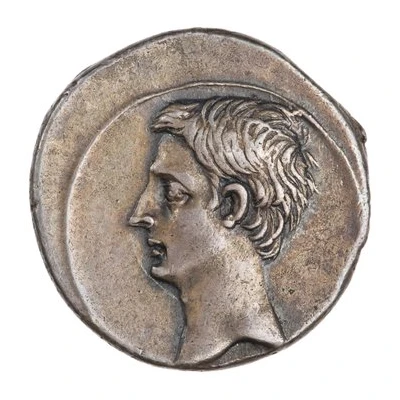


© American Numismatic Society (ANS)
Denarius - Octavian CAESAR DIVI F; Victory 32 BC - 29 BC
| Silver | 3.9 g | 21.5 mm |
| Issuer | Rome › Roman Empire (27 BC - 395 AD) |
|---|---|
| Emperor | Augustus (Caius Octavius) (27 BC - 14 AD) |
| Type | Standard circulation coin |
| Years | 32 BC - 29 BC |
| Value | 1 Denarius |
| Currency | Denarius, Reform of Augustus (27 BC – AD 215) |
| Composition | Silver |
| Weight | 3.9 g |
| Diameter | 21.5 mm |
| Shape | Round (irregular) |
| Technique | Hammered |
| Orientation | Variable alignment ↺ |
| Demonetized | Yes |
| Updated | 2024-10-06 |
| Numista | N#247724 |
|---|---|
| Rarity index | 100% |
Reverse
Victory, draped, standing right on globe, holding wreath in right hand and palm in left.
Script: Latin
Lettering: CAESAR DIVI F
Unabridged legend: Caesari Divi Filius
Translation: Caesar, son of the divine
Comment
Mass varies: 3.86–3.93 g;Diameter varies: 20.5–22 mm;
Source: Online Coins of the Roman Empire (OCRE)
Interesting fact
One interesting fact about this coin is that it features an image of Victory on the reverse side, which was a common motif on Roman coins during this period. The image of Victory was meant to symbolize the power and dominance of the Roman Empire, and it was often depicted holding a wreath or a palm branch, as seen on this particular coin. The use of Victory as a symbol of Roman power and influence can be traced back to the time of Julius Caesar, who was the first Roman leader to use it on his coins. This coin, issued during the reign of Octavian (later known as Augustus), continues that tradition and showcases the enduring importance of Victory in Roman culture.
